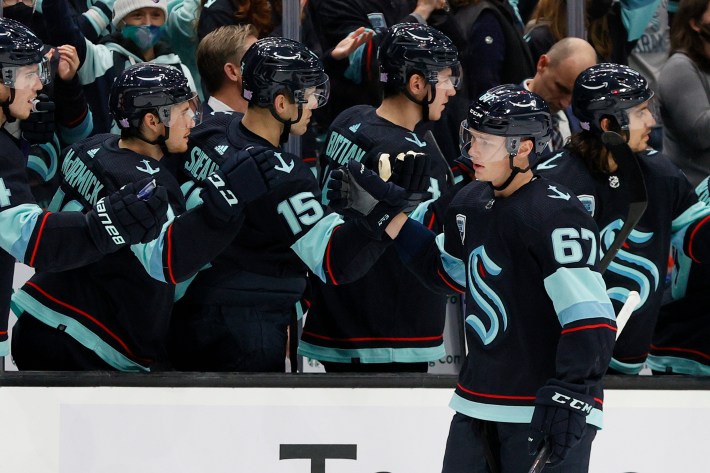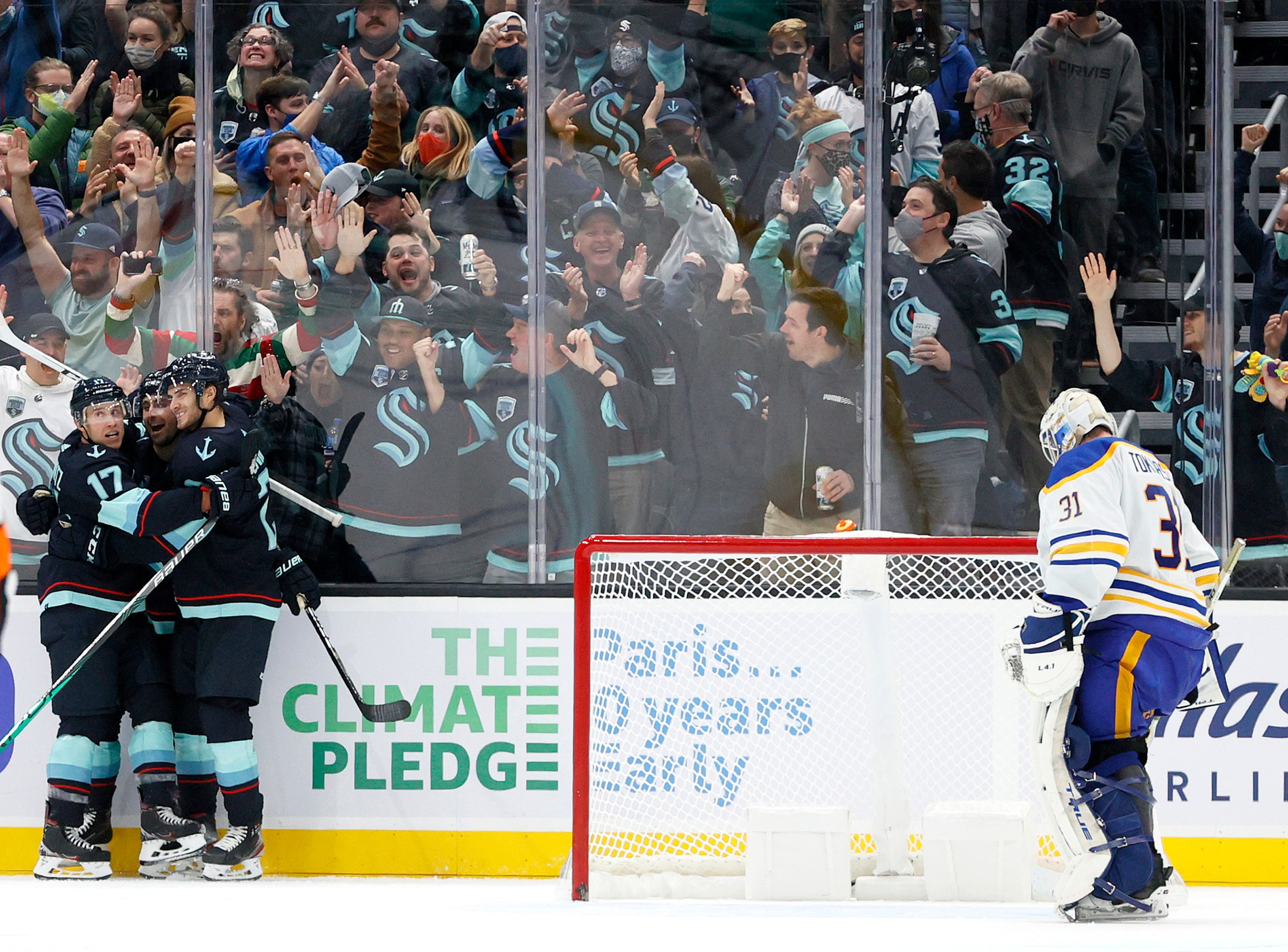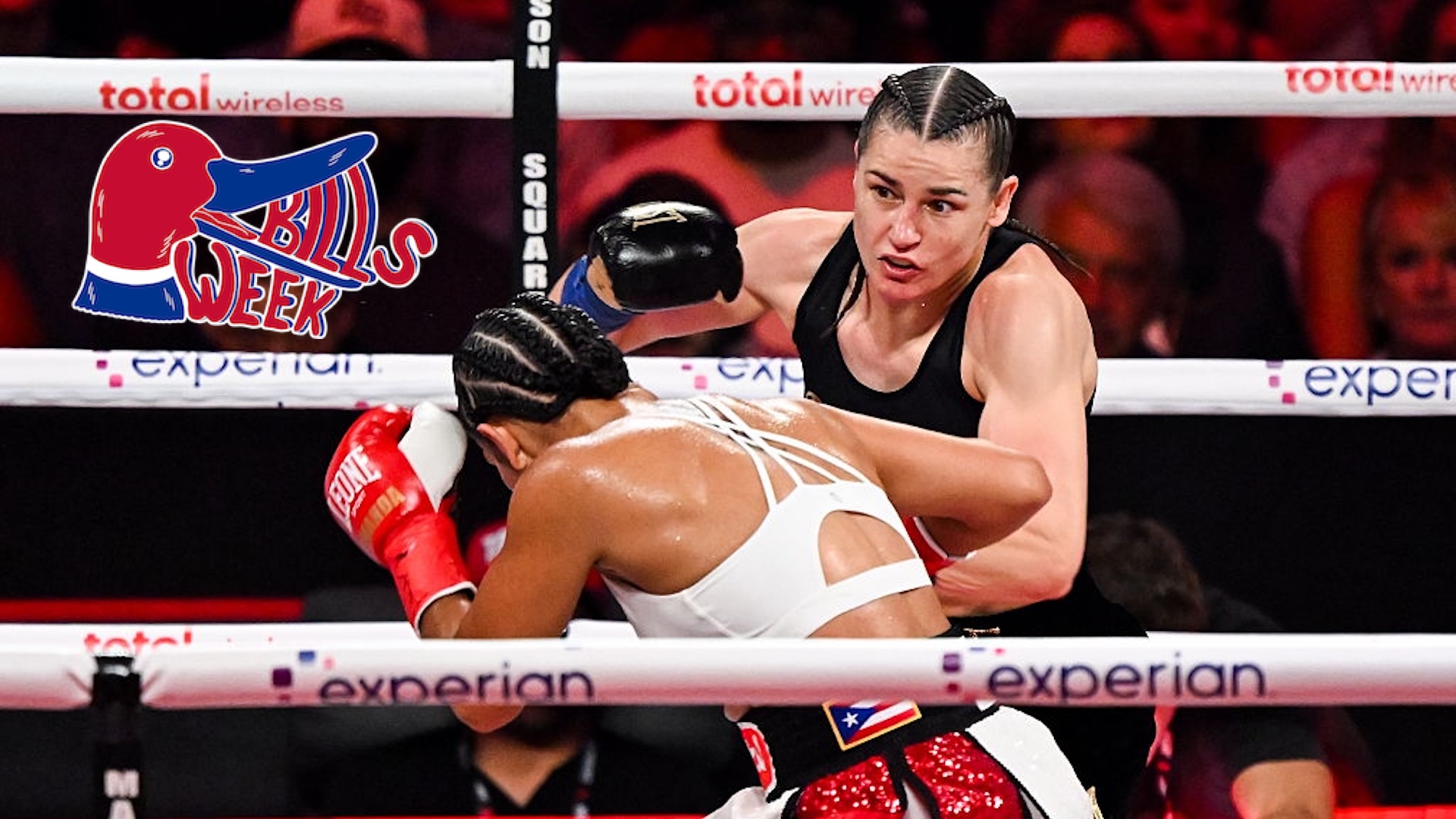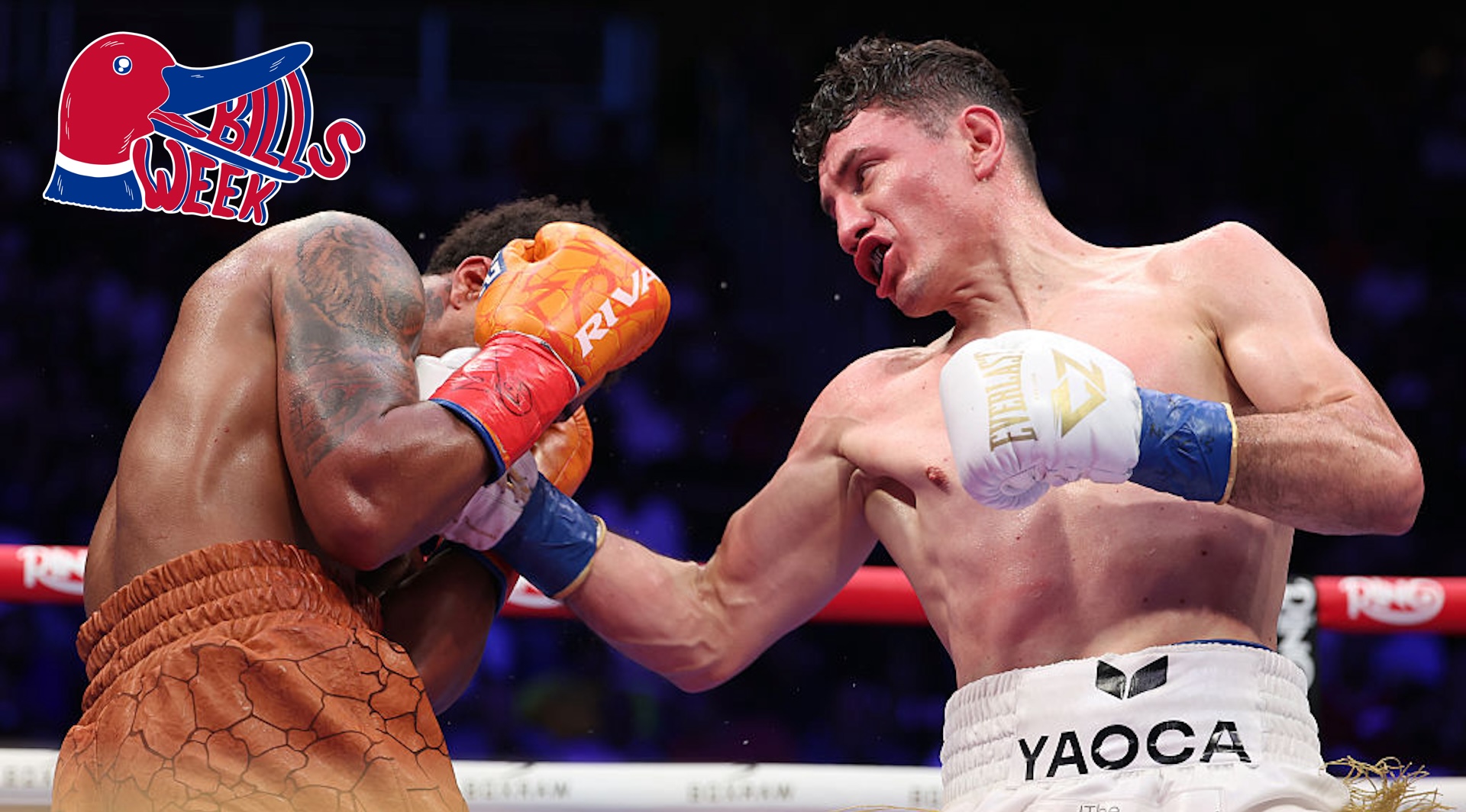SEATTLE — The Seattle Kraken have some work to do. See, the other teams in the NHL have had years and years to agonize their fans, and for the league’s newest team to catch up, it’ll need to pack generations worth of pain into a dozen games. So the Kraken try their best. Breakout chances evaporate as fast as they emerge; shots sail wide of the net; night after night, they outshoot and can’t outscore; every bounce goes the other way. But the fans won’t be so easily frustrated. On a Thursday night at home in Seattle, the team’s record stays out of the picture and not a single chance for celebration is passed up. In the third period, Kraken forward Brandon Tanev punctuates a fast, furious backcheck with a loud hit into the boards and the crowd swoons. A Kraken game is a ton of fun.
So fun, you begin to suspect a coverup is afoot. There’s the rink made from recycled rain water, the catchy goal song (Nirvana’s "Lithium" refashioned so the refrain becomes “I like it, let’s go Kraken”), the gorgeous sweaters, the goal horn taken from a decommissioned state ferry, the three stars of the game each awarded a plush salmon (reviewed by a “fish expert” for accuracy and exactly 22 inches, as per the Washington State Sport Fishing Rules) to sling into the crowd. What is all the fun being heaped atop? In all the novelty, is anyone paying attention to what happens on the ice?
At a sports bar around the corner from the arena, a few hours before the Kraken's game against the Buffalo Sabres, I pose this question to Marisa Ingemi, the Seattle Times’ new Kraken reporter. Ingemi covered the Bruins for the Boston Herald until she was laid off early in the pandemic. The new beat—expansion team instead of Original Six—has brought a more wholesome crowd into her Twitter replies; passionate calls for the head of Tuukka Rask have been replaced with requests to explain, if it’s not too much trouble and sorry for the dumb question, what “fourth line” means, thanks! “The angry emails I get now are like, ‘I can’t find the broadcast on TV,’” she says.
A few days ago, Ingemi put out a call on Twitter to see how fans felt about the team’s 3-6-1 start and was surprised by how cheerfully everyone took it. “If this is the Bruins,” she tells me, “it’s time to fold the franchise.” The Kraken have inherited another measuring stick from the NHL's last new franchise. The Vegas Golden Knights bypassed the noble, charming rite of expansion-team suckage to reach the Stanley Cup Final in year one, and have remained among the league's elite. The morning of the Sabres-Kraken game, Vegas became the league's main character by acquiring Jack Eichel from Buffalo.
But Ingemi suspects the Vegas comparisons better reflect sports media’s interest in narrative-building than they do actual Kraken fan expectation. Many of these folks grew up on Mariners baseball, after all. They’re a patient people.
The Kraken team GM Ron Francis built is not great, but also not terrible, even if they’re underperforming rosy points projections that saw them contending in a weak Pacific Division. The models in question probably overestimated the team’s goaltending, which has been unspectacular through the first 12 games of the schedule. A good chunk of the Kraken's payroll is tied up in starter Philipp Grubauer and his six-year, $35 million contract. (With that money, he can afford two, maybe three, bottles of water at the arena.) The wonky, frenzied pacing of Kraken hockey suggests the skaters are still adjusting to new roles and expectations, too. Ingemi pointed out that the Kraken only opened the scoring in three of their first 10 games. Against the Sabres, in the seconds after a first-period Kraken power play expires (the Kraken power play expires a lot; more on this in a second) Alex Wennberg sends a cross-ice pass over to Morgan Geekie, and Geekie’s one-timer from the left dot makes it four of 11.

About that power play—well, let’s have my friend, watching her first-ever hockey game with me this evening, analyze it for you: “They keep being on it, but they never do anything.” This is true and it’s weird, because usually they are doing a lot. A team that can generate really quick, thrilling chances at 5-on-5 turns static on the man advantage. After this weekend, Seattle's power play ranks worst in the league, behind even Arizona (where the GM probably whacks the players with a stick for every goal they score) and Vegas (who scored their first power-play goal of the season on Saturday after 19 unsuccessful tries). The expansion factor gives the Kraken a built-in excuse here: These guys have literally never played together. But it might also mask fixable tactical problems. They keep faith in systems they seem to lack the personnel for, and they do so at the expense of a style that could more exploit the Kraken's strengths, like the team’s speed in transition. Dave Hakstol, the head coach, continues to insist the puck luck will start going the Kraken’s way at some point. “The excuses start to get old after a while," Ingemi says. "You’d like to see a little more urgency.”
On Saturday night, a lack of urgency would hand the Kraken their most embarrassing loss in—har har—franchise history. Seattle would score twice in the span of a minute to open the game against winless Arizona, and take a 3-1 lead late into the second until the Coyotes storm back with three straight goals to go up 4–3 halfway through the third period. Kraken captain Mark Giordano would tie it up late with a slapshot from the point; it would look like the Kraken would salvage at least a point. A few seconds later—oh dear—Arizona's Lawson Crouse would get one through Grubauer's abyssal five-hole to retake the lead with a minute left to go. “Overall in some critical areas, our focus was not there,” Hakstol would say after.
At the game I attend, my focus wanders from hockey over to another sport: jersey spotting. Nothing too interesting to report in the Sabres department on Thursday: some Gilbert Perreaults; a Hasek; a Dahlin; and quite a few Eichels out for one last ride. (A woman leaning against a condiment table has already taped a red line through the name on hers.)
It's the Kraken jerseys that bewilder and inspire me, a fan who’s spent the better part of a year fretting over her first NHL sweater purchase and isn’t any closer to making a decision. How has everyone here already decided which one of these inessential players was worth their couple hundred bucks? Nobody seems to share my not actually good???/gone at the trade deadline???/too basic??? jersey-buying neuroses. Someone wearing Mark Giordano tells me he chose the captain because their last names are similar. The woman he’s with waited a few games before picking Yanni Gourde; he's done a lot of postgame interviews on TV and seems funny. Another woman wandering about the concourse during the second intermission says, almost condescendingly, that she wears Brandon Tanev because 13 is her favorite number and also she likes his deer-in-headlights headshot. At the team store, I meet my precise spiritual opposite in a carefree man wearing a home Grubauer jersey and heading to the checkout counter with a road Grubauer jersey. He doesn't know anything about the guy; he just went with a recommendation from his dad. Captain and starting goaltender are usually safe bets, a salesman supervising the jersey section of the store tells me. But Tanev, a workhorse on the ice every night, sells very well, and defenseman Jamie Oleksiak’s up there, too. Then, like he’s sized me up as someone who could handle the stronger stuff, he lets me know he has a few Mason Appletons in the back.
Kraken fans could one day be as miserable as the rest of us. For now, they’re just having a good time. And that is the point, no? The imagined stakes, the whining, the resentments that build—those don't mark the natural state of fandom but its most corrupted version. Hardly a coincidence that the best experience I’ve had at a pro sporting event in many years is one shared with newbies getting the hang of their own traditions and enthusiastic, open-minded transplants, like the Tanev-Eberle couple waiting near me at the train station platform after the game. They're former Penguins fans, they tell me. Tanev was drafted to the Kraken from Pittsburgh, and Jordan Eberle, notorious Penguin-killer in his Islanders days, was “an educated guess” of a jersey to buy and wear that night.
A good guess, too. Eberle gets set up for his first goal of the game, a one-timer I simply love, while his teammate Jaden Schwartz applies good forechecking pressure; his second comes after a neat backhand-forehand move as he circles around a defender; and he scores his third on a chance off the rush. A pretty lame initial scattering of hats on the ice betrays the crowd's relative inexperience. But they're all quick studies. The noise never dies down. Slowly, more and more hats begin to fall.







